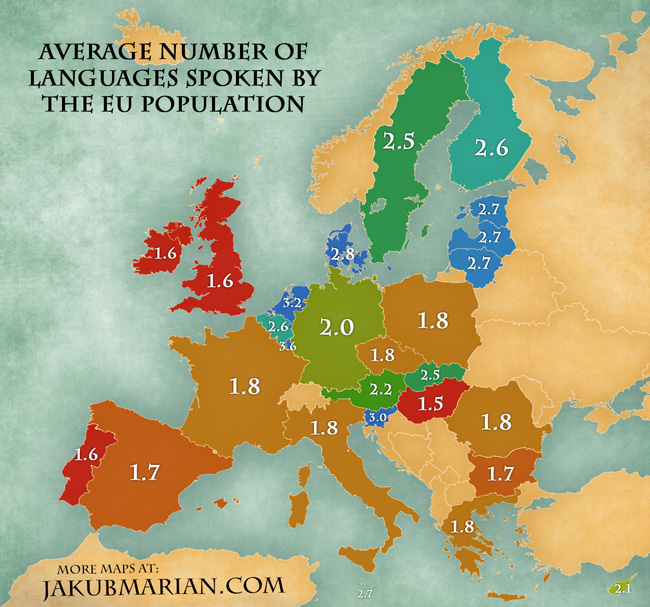The Eurobarometer 386 survey organized by the European Commission provided a lot of insight into linguistic abilities of Europeans, and it was a rich source of data for me to visualize (see this map, for example).
While browsing the Annex of the survey, I noticed there was also interesting information about the percentages of people who speak a certain number of second languages. From this, it was easy to compute the average number of languages spoken in each country, and this is exactly what the following map shows.
Please note: The survey took place in 2012, so Croatia was not yet included. The languages people speak were self-reported; there were no actual tests of proficiency.

What is perhaps even more interesting is the median number of languages spoken. As median itself would be somewhat too rough in this case, I used a slightly more useful indicator.
Whole numbers in the following picture agree with the classical median, e.g. the 2 for Germany indicates that if you ordered all Germans according to the number of languages spoken and asked the one in the middle, he or she would speak exactly two languages (so it is reasonable to say that a typical German speaks two languages).
The definition of half numbers is as follows: X½ for a country means that between 45% and 55% (i.e. “about one half”) of its inhabitants speak X+1 languages. For example, 1½ for France indicates that about one half of the French speak two languages, and the rest speak just a single language.

Comparison of the two maps shows a few interesting trends. Italians and Greeks, for instance, both speak an average of 1.8 languages, but the median is 1 for Italy and 2 for Greece. This is because the typical Italian speaks one language, but those who speak a second language speak in fact usually 3 or 4 languages overall (raising the average), whereas most Greeks speak 2 languages, but few of them speak 3 or 4.
 Tip: Are you a non-native English speaker? I have just finished creating a
Tip: Are you a non-native English speaker? I have just finished creating a  Web App
Web App
